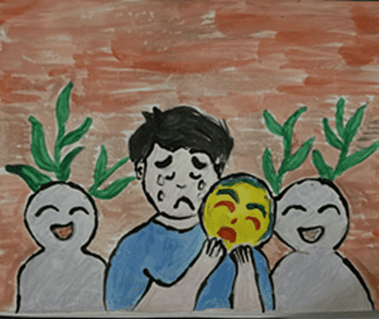Childhood Developmental Disorders
Childhood Disorders
Have you ever wondered why some children have unusual physical characteristics or have delayed development?
Childhood disorders, often known as developmental disorders, refer to a range of problems characterised by impairments in physical,learning,language or behaviour areas. These conditions usually begin during childhood, have an impact on day-to-day functioning, and usually last for the rest of a person’s life. Most children with developmental disabilities are often affected in multiple domains of function because of the nature and extent of brain dysfunction. As a parent, if you feel that your child is not meeting his/her age-appropriate milestones, or if you think there could be a problem with the way your child plays, learns, speaks, acts, or moves, talk to your child’s paediatrician and explain your concerns. Acting early can help in early intervention and can make a great difference.
Cognitive Disabilities
Cognitive disabilities in children include mental retardation as well as specific learning disabilities in children. Mental retardation is characterised as a condition in which a person’s intelligence is below average and their adaptive behaviour is impaired. Mild mental retardation is known to limit the child’s academic performance while more severe grades occur with multiple disabilities.
Motor Disabilities
Motor disabilities include limitations in walking and in the use of the upper extremities (arms and/or hands).
Some motor disabilities also affect speech and swallowing of the child. Severity can range from mild to profound.
Motor disabilities diagnosed in infancy or childhood include cerebral palsy, congenital abnormalities or
progressive disorders, such as the muscular dystrophies and spinal muscular atrophies.
Vision, hearing and speech disabilities
A number of cases of visual as well as hearing disability have their onset early in life.
Learning to speak depends on the ability to hear and repeat sounds. The optimal period
for speech acquisition is the first 2 years of life; any further delay may indicate a speech disorder.
It is recommended to screen young children for hearing impairment or speech delay early and
evaluate any suspected disabilities.
Behavioural Disorders
The majority of children with psychological or behavioural disorders go undiagnosed or untreated and this is more prevalent in developing countries. Anxiety disorders, depression, autism and attention-deficit/hyperactivity disorders are examples of behavioural diseases that need further investigation. These illnesses can have a significant impact on the child’s overall development if left untreated.
Types of Development Disorders
Childhood developmental disabilities are sometimes diagnosed at birth, but more often, are not easily identified until ages three to six. They may range from mild to severe depending on their symptoms. Some of the more common developmental disabilities include:
Autism
-Autism is a neurodevelopmental disorder characterized by severe impairment in reciprocal social interactions and communication skills, as well as the presence of restricted and stereotypical behaviours.
ADHD
-ADHD is a neurodevelopmental disorder characterized by inattention and disorganization, with or without hyperactivity-impulsivity, causing impairment of functioning.
Cerebral palsy
-Cerebral palsy is a group of disorders that affect movement and muscle tone or posture. It’s caused by damage that occurs to the immature brain as it develops, most often before birth.
Down syndrome
-Down syndrome is a genetic disorder caused when abnormal cell division results in an extra full or partial copy of chromosome 21. Depending on the severity of the disorder, it may cause lifelong intellectual disability and developmental delays in individuals.
Fragile X syndrome
-Fragile X syndrome (FXS) is an inherited genetic disease passed down from parents to children that causes intellectual and developmental disabilities.
Genetic disorders
-A chromosomal disorder may be inherited or may be sporadic, meaning there is no family history
Spina bifida
-Spina bifida is a condition that affects the spine and is usually apparent at birth. It is a type of neural tube defect (NTD) that results in damage to the spinal cord and nerves.
Muscular Dystrophy
-Muscular dystrophy is a group of diseases that cause progressive weakness and loss of muscle mass. In muscular dystrophy, abnormal genes (mutations) interfere with the production of proteins needed to form healthy muscle.
Velocardiofacial syndrome
-VCFS, is a complex syndrome that has been associated with more than 30 different characteristics, including defects of the palate, heart defects, learning disabilities and distinct facial features.
Intellectual disability
-Intellectual disability is a generalized disorder that is characterized by significantly impaired cognitive functioning and deficits in two or more adaptive behaviours.
Developmental impairments can occur at any time throughout childhood and endure for the rest of a person’s life. The majority of developmental problems start before a baby is born, but some can occur after delivery due to injury, infection, or other circumstances. Most developmental disabilities are thought to be caused by a complex mix of factors. These factors include genetics; parental health and behaviours (such as smoking and drinking) during pregnancy; complications during birth; infections the mother might have during pregnancy or exposure of the mother or child to high levels of environmental toxins.